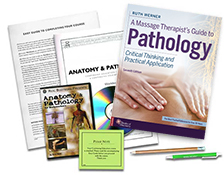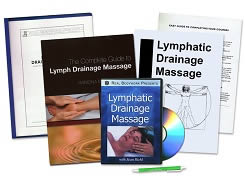Whether plastic surgery is utilized for health purposes or cosmetic reasons, the aftereffects are the same for everyone – pain, swelling, scarring, heightened anxiety and, at times, depression. In some cases, medication may be prescribed for the pain and anxiety. But there are also other options – options that can help reduce the dosage or length of time of drugs are used, as well as aid in the healing process.
An increasing number of plastic surgeons are looking at the feasibility of using massage therapy in both pre and postoperative situations, and either hiring a massage therapist as part of the staff or partnering with trained massage therapists in private practice. Some surgeons are even promoting massage therapy services as a part of an overall offering.
Reducing Anxiety and Stress
Prior to getting plastic surgery, the client often has anxiety or stress about the procedure. One of the primary benefits of massage is a reduction of stress. A plastic surgeon recommending or providing massage before surgery may market it as a luxurious bonus in a spa type setting or simply refer a client to a licensed massage therapist. Numerous studies over the years have shown that massage therapy increases the levels of endorphins and serotonin in the body, thus reducing anxiety and promoting relaxation. Massage also reduces certain hormone levels such as cortisol, which is responsible for increased stress.
Postoperative Benefits of Massage
- Eases Pain – The anticipated pain after plastic surgery may cause anxiety in people having the procedure. For the most part, the doctor will prescribe anti-pain medication for the days immediately following the procedure. Started a few weeks after surgery, massage has been shown to interfere with the pain receptor signals to the brain. Also, the use of contrast therapy (using alternating cold and warm packs) can ease the pain caused by swelling and the muscle tightness caused by the surgery.
- Reduces Swelling – The benefits of lymphatic drainage massage (LDM) techniques have long been known to reduce the edema caused by the aftereffects of mastectomies, which often require the removal of adjacent lymph nodes and cause a reduction in the flow of lymph fluids. LDM mimics the pulse and flow within the lymph system. It helps to move stagnant fluids out of interstitial body tissue and into lymphatic vessels, thus both reducing the edema and stimulating the immune system.
- Softens Skin and Reduces Scarring – Part of the body’s own healing process is to protect an injured site from further harm. The physiological process involved does not recognize that the injury or intrusion is from a surgeon’s scalpel or a mugger’s knife. Though the mind understands the difference between cosmetic enhancement and assault, the body only feels pain and an interruption of its normal processes, and seeks to recover. This results in an increased production of collagen fibers which, if over produced, form highly visible hypertrophic or keloid scars. Massage therapy done locally on newly healed scar tissue can reduce and soften this buildup of tough fibrous tissue. Collagen will soften using warmth resulting from touch therapies such as Swedish massage or localized cross friction techniques.
- Speeds Up Healing – Massage speeds up the overall healing process by helping to eliminate the buildup of toxins that occur after plastic surgery and increasing the circulation of blood to the area that brings nutrients to both the skin and its underlying layers of tissue. The body, in an attempt to protect itself against further injury from intrusion will, after surgery, withdraw blood from the area, retaining the life sustaining fluid for internal organs. This can lead to a deterioration of the affected tissue and a temporary deadening of nerve endings. By encouraging a healthier blood flow, massage can help to return nourishment and flexibility to the affected area. Massage therapy also helps build up the immune system, thus helping to speed up the overall healing process.
- Lifts Spirits – Between the postoperative pain, swelling and high expectations people have of plastic surgery, it is likely they will experience some depression. Massage therapy has, time and time again, shown itself to be beneficial in making people feel better about themselves.
Working With a Plastic Surgeon
If you are interested in working in conjunction with a plastic surgeon, make sure you brush up on your anatomy, physiology and pathology. You should also know the effects of drugs used before and after surgery, and how they may be affected by massage. Be familiar with medical terms and procedures and be aware of what can go wrong after surgery. Furthermore, it is important to keep an open and professional three-way communication with the surgeon, the client and yourself, including maintaining accurate intake and SOAP notes.
Precautions
Massage should not be part of postoperative treatment until the client gets clearance from the surgeon or primary care physician. Depending on the procedure done, massage may begin as early as a few days after surgery, or may have to wait until 3 to 4 weeks later. If there are stitches, massage will have to wait until they are removed.
Reconstructive surgery is sometimes performed after surgery to remove cancerous tumors or in mastectomies. Massage, which historically has been advised against in these circumstances, is beginning to gain recognition as a viable adjunct therapy. However, it is still advised not to use massage on active tumors, recent incisions or on patients undergoing radiation.
Whether a person has undergone plastic surgery for personal image enhancement or because of medical necessity, the integration of massage therapy to pre and postoperative care offers both psychological and physical benefits. For some, this may be the first time they are experiencing massage in a therapeutic setting. And who knows, they may become long-term clients!















